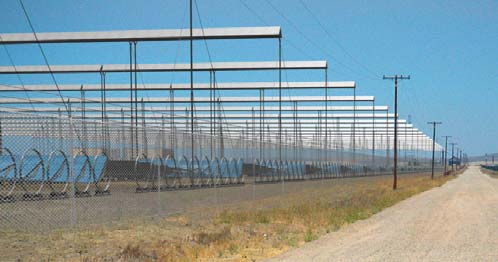Solar metallurgy: Difference between revisions
Jump to navigation
Jump to search
(created stub) |
m (+image) |
||
| Line 1: | Line 1: | ||
[[File:Ausra field.png|498px|thumb|right|Ausra-type solar concentrator. Potential collector for solar process heat. ]] | |||
Very broadly defined, solar metallurgy includes both photothermal processes (e.g. photothermal iron reduction, photothermal concentrate titanium white waste acid) as well as photovoltaic processes (e.g. photovoltaic steel-making and preparation of pure iron by photovoltaic electricity). The benefit of photothermal energy is that working with metals often requires high temperatures, controlled atmospheres, and freedom from contamination. A solar concentrator (such as a [[heliostat]]) may provide these conditions. | Very broadly defined, solar metallurgy includes both photothermal processes (e.g. photothermal iron reduction, photothermal concentrate titanium white waste acid) as well as photovoltaic processes (e.g. photovoltaic steel-making and preparation of pure iron by photovoltaic electricity). The benefit of photothermal energy is that working with metals often requires high temperatures, controlled atmospheres, and freedom from contamination. A solar concentrator (such as a [[heliostat]]) may provide these conditions. | ||
Latest revision as of 00:43, 24 July 2016
Very broadly defined, solar metallurgy includes both photothermal processes (e.g. photothermal iron reduction, photothermal concentrate titanium white waste acid) as well as photovoltaic processes (e.g. photovoltaic steel-making and preparation of pure iron by photovoltaic electricity). The benefit of photothermal energy is that working with metals often requires high temperatures, controlled atmospheres, and freedom from contamination. A solar concentrator (such as a heliostat) may provide these conditions.
Related pages on: Smelting, Foundry, Metal, Heliostat
- article (1957): "A solar furnace for research in nonferrous metallurgy"
